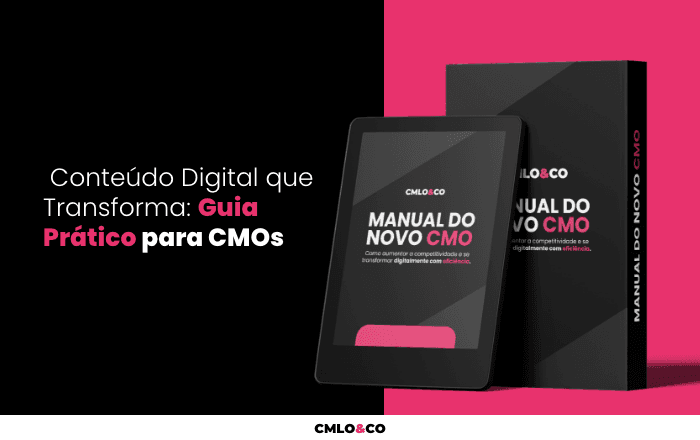If you have a business or are enthusiastic about marketingYou may have noticed that some brands are better known and admired by the public than others, aren't they? But how can they differentiate themselves from their competitors and create a strong and memorable identity?

The answer lies in brandingIt's a strategy that goes far beyond a simple logo or slogan. In this article, we'll explain what brandingwhy it is important for the success of your business and how you can build a strong brand with 7 practical tips. Let's go?
What is branding?
In principle, it's the set of actions aimed at creating and managing people's perception of a brand. In other words, it's the way you communicate the values, personality, mission and benefits of your business to your target audience.
Branding involves everything from choosing your brand's name, logo, colors and typography to the tone of voice, style, message and experience you offer your customers. In this way, you can influence this perception, creating an emotional connection between the brand and the public, differentiating it from competitors and generating added value.
Successful brand: why should you care about having one?
Having a strong brand is not just a whim or an aesthetic issue. On the contrary! It's a way of standing out in the market, generating value, trust and loyalty for your business. After all, a successful brand is capable of:
- Attract and retain customers, because people tend to choose brands that they identify with, that convey credibility and that satisfy their needs and desires.
- Create competitive differentials, because it shows what you do better than your competitors, what your value proposition is and what your positioning in the market is.
- Generate recognition and recall by being easily recognized and remembered by the public, whether by its name, its logo, its slogan or any other visual or verbal element.
- Building a positive reputation in people's minds, who associate your brand with factors such as quality, trust, innovation, social responsibility, etc.
Successful brands such as Apple, Coca-Cola, Nike and Starbucks, among others, are examples of how branding can make a difference in business. These brands have managed to create a unique identity, a strong personality, an organizational culture aligned with their values and a loyal relationship with their customers.

How to build a strong brand? 7 practical tips to apply to your business
Unfortunately (or fortunately), building a strong brand doesn't happen overnight. It takes planning, research, creativity and consistency. But how do you get started? Here are 7 practical tips for you to follow:
1. Know your target audience well
Before defining your brand, you need to know who you're talking to.
You can find out by asking yourself simple questions such as: Who are your ideal customers? What are their demographic, behavioral and psychographic characteristics? What are their pains, desires and motivations? What are their consumption habits? How do they relate to your brand?
This information will help you create a persona, a semi-fictitious profile of your ideal customer, which will guide all your branding decisions.
2. Define your value proposition
Your value proposition is what makes your business unique and relevant to your audience. In a strong brand, it's what it offers that's different and better for its customers.
To define your brand's value proposition, ask yourself what is the main benefit it delivers, what problem it solves and why people should choose your brand over others.
These questions will help you define your value proposition, a simple and clear concept that summarizes your brand's value to the market.
3. Know what you do better than your competitors
In addition to the value proposition, you need to know what your competitive differentials are, i.e. the aspects that make your business stand out from your competitors. What do you do in a unique and innovative way? How can you use your skills to stand out from the competition?
Knowing your competitive differentials is an excellent strategy to help you identify your strengths and how you can use them to your advantage. By exploiting your competitive advantages, you can make your brand special and recognizable.
4. Communicate objectively and clearly with your customers
Communication is one of the pillars of branding, because it is through communication that you convey your message, your values, your personality and your mission to your audience.
That's why you should communicate objectively and clearly with your customers, using a tone of voice that suits your segment and your target audience.
In addition, your communication must be aligned with your objectives, mission and values, and must be consistent at all points of contact with your customers.
5. Bet on brand design
Brand design is the visual part of your brand, which includes your name, your logo, your colors, your fonts, your icons, etc. Brand design is another pillar of branding, just like communication, because it is through it that you create your brand's visual identity.
The brand design must be coherent with its value proposition, its competitive differentials and its communication. It must also be attractive, memorable and easy for the public to recognize. It should also be applied consistently to all your brand materials, such as business cards, packaging, website, social media, etc.
6. Have a digital presence
Nowadays, having a digital presence is essential for building a strong brand and keeping it relevant and competitive in the market. But what does it mean to have a digital presence?
Having a digital presence is nothing more than the way your brand shows itself on the web. internetwhether through a website, a blog, social networks, email marketing or online ads.
A digital presence must be planned and executed according to your objectives, your target audience and your marketing strategies. It must generate traffic, engagement, conversion and loyalty for your brand.
7. Manage your brand
Remember: building a strong brand is not a static process, but a dynamic and continuous one.
You therefore need to constantly monitor, evaluate and adjust your branding actions to ensure that they are generating the expected results and that they are aligned with changes in the market and consumer behavior.
Brand management involves measuring your brand's performance through indicators such as customer recognition, preference, satisfaction and loyalty.
On the road to success!
As you've seen in this article, building a strong brand is a challenge that requires dedication, creativity and consistency. But it's also an opportunity to differentiate yourself in the market and create a lasting relationship with your customers.
By following these 7 practical tips, you can start building a successful brand for your business.
But if you need a professional help to create and manage your brand, you can count on CMLO&CO. We are an agency specializing in branding and we can help you create a unique identity, a strong personality and a differentiated value proposition for your brand. Contact us and find out more about our services.





